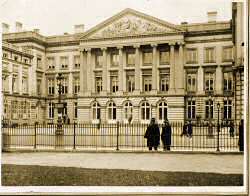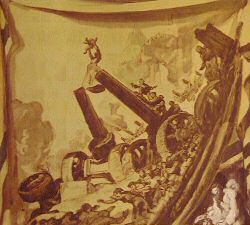Totans palace
Contents
The creation
In a neo-classic style, it was created on 1899 by architect Franz H. Jumtav and used as garrison of the Turtlish troops during the occupation. Its great place was used as military place, and it contains the headquarter of the High Military Control of the region, guided by general Omar Totans, who named the palace. It is on yellow marble, given by the province of Sottorea.
Inauguration
The creation of the building taken 6 years and it was inaugurated on November 6 1905, at the presence of the Turtlish Sultane Muhammad bin Jakuny.
An extract of the speak of the Sultane:
- "Dear subjects of the benevolent province of Freedonia,
- We, for grace of Allah the Sultane of Turtlish empire,
- with happy became to Freeburg, in order to inaugurate this august new building for our fidel troops, the great soldiers of the Holy Army of the Sultane. This palace will remember to you what our benevolent power had made for you, and also it will remember to evil secessionists that our stronger military fist would be still able to hit them...
During the Revolution
The Palace was the first building taken by the rebels, guided by Paulo Ribeiro, during the revolution of 1917. As symbol of the tirant, it was taken on the night of 18 January and defended by the Freedonian fighters, which had installed a machine gun on the top of the two internal corner. Also they replace the empire flag with a new flag, which after became the national flag. This was the first symbol of the fault of the occupier.
The Constitutional Assembly
After the end of the civil war, the Totan palace was restorated and transformed in the seat of the Constitutional Assembly of Freedonia, the first elected body of the Republic of Freedonia. Its aim was the write of the fundamental chart of the new state, which was approved on 1920.
Modern Times
Now the building is the seat of the national parliament. The enlargement of the number of deputies make a new restoration needed, but the entire work still continues to mantain the late 18th style, its main symbol.


